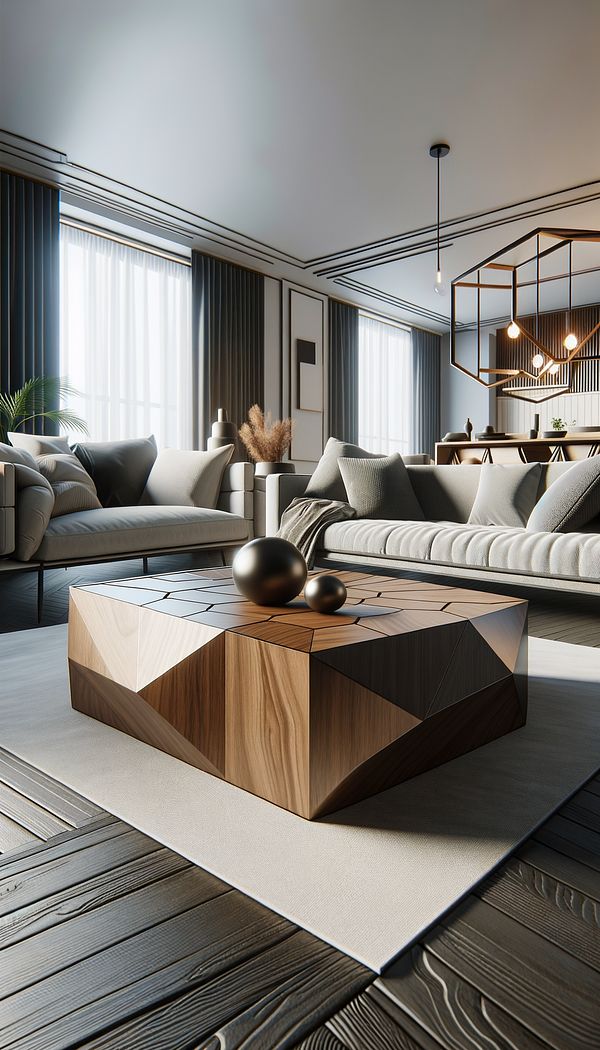What is a Chamfer?
A chamfer is an angled cut or bevel made along the edge or corner of a material.
Description
In the realm of interior design, a 'chamfer' plays a subtle yet crucial role in defining the aesthetics and functionality of various design elements. Characteristically, it is an angled or sloped cut made along the edge or corner of a material, such as wood, metal, or stone. This architectural technique not only serves to remove the sharp edges of materials, making them safer and more comfortable to touch but also adds a refined, decorative aspect to furniture, architecture, and accessories.
Chamfers can vary significantly in their angle and depth, allowing for a range of visual effects. From sharp and minimalist to soft and understated, the type of chamfer applied can significantly influence the overall style and feel of a design piece. In historical contexts, chamfers have been utilized for their decorative merits, showcasing craftsmanship and detailing in pieces ranging from grand architectural columns to delicate furniture edges. In modern design, chamfers contribute to the clean, streamlined look that defines contemporary aesthetics.
Understanding how chamfers can impact the and functionality of design elements is crucial for any interior designer. Their application can subtly alter the perception of an object's shape, enhance tactile experience, and contribute to the visual flow within a space.
Usage
Chamfers are found in various aspects of interior design, from the beveled edges of a modern coffee table or desk to the subtly angled corners of cabinetry or architectural moldings. They can also be applied to door and window frames, countertops, and even decorative objects. The use of chamfers is not limited by style; it crosses over from classical designs, with their ornate and detailed chamfering, to sleek, modern pieces that use chamfers for a clean, precise finish.
FAQs
-
Can chamfers be applied to any material?
Yes, chamfers can be applied to a variety of materials including wood, metal, stone, and even some plastics, depending on the design requirement and the machining or handcrafting techniques used.
-
Are chamfers purely decorative?
While chamfers add a decorative touch to interior design elements, they also serve practical purposes, such as removing sharp edges for safety and improving the tactile experience of interacting with an object.
-
How do chamfers differ from bevels?
Chamfers and bevels are similar in that they both involve angled cuts along an edge or corner. However, 'chamfer' typically refers to a cut at a 45-degree angle, whereas 'bevel' can vary more significantly in the angle of the cut.
-
Do chamfers affect the structural integrity of materials?
In most cases, chamfers do not significantly affect the structural integrity of materials. However, the depth and angle of the chamfer need to be carefully planned, especially in load-bearing applications, to ensure it does not compromise the material's strength.
-
Can I add chamfers to an existing piece of furniture?
Yes, chamfers can be added to existing pieces of furniture or architectural elements, although this may require professional skill and tools to ensure a smooth, precise cut.
-
Are there specific tools for creating chamfers?
Yes, there are specific tools designed for creating chamfers, including chamfering bits for routers, chisels for woodworking, and specialized cutting tools for metal and stone.
Practical Application
When considering incorporating chamfers in your next interior design project, think about the material you're working with and the overall desired aesthetic. Experiment with the depth and angle of the chamfer to achieve the look you’re after, whether it’s a subtle touch or a bold statement. Remember, the key to a successful chamfer is precision and consistency, so ensure you have the right tools and skills (or professional help) at hand.
-
Architectural Elements199 articles
-
Furniture Types599 articles
-
Decorative Techniques322 articles
-
Fabrication & Craftsmanship133 articles
-
Construction & Building86 articles
-
GroutGrout is a dense fluid used to fill and seal the joints between tiles.
-
BeadingBeading is a decorative detail characterized by a series of small, rounded shapes or beads lined up in a row.
-
Gothic RevivalGothic Revival is a design style that reinterprets the architecture, interiors, and decorative arts of the Gothic period.
-
Cast Iron FurnitureCast iron furniture refers to items of furniture made primarily from cast iron, a type of iron that has been melted, poured into molds, and allowed to solidify.
-
Roll-Top DeskA roll-top desk is a type of desk characterized by a flexible, sliding, tambour door that rolls up to expose the work surface and compartments.
